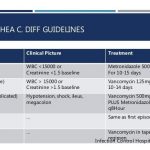
Contents
Pilonidal Cyst
A pilonidal cyst is a sac filled with debris and hair that occurs in the area at the top of the crease of the buttocks overlying the tailbone (sacrum). This cyst can become infected, forming a painful abscess.
Causes of a pilonidal cyst
The exact cause of pilonidal cysts is unknown. It is now believed that small groups of hairs and debris get trapped in the pores of the skin in the upper cleft of the buttock and form a pocket that grows into an abscess. Some babies are born with an indentation just above the crease of the buttocks called a sacral dimple, which can become a pilonidal cyst if infected.
Risk factors for a pilonidal cyst
Risk factors for pilonidal cysts include male predominance, young age, sedentary lifestyle, thick body hair, family history, local shaving or friction, being overweight or obese, and a previous pilonidal cyst.
Symptoms of a pilonidal cyst
If a pilonidal cyst is not infected, there may be no symptoms. When infected, symptoms include fever, pain, low back pain, swelling, redness, discharge of blood or pus, and foul-smelling odor.
Diagnosis and treatment
Diagnosis is done through a physical examination. Treatment involves draining the abscess through a procedure called incision and drainage. More extensive surgery may be needed in some cases. Antibiotics may be prescribed in severe infections. Recovery time varies depending on the type of wound closure. Non-surgical treatment options are considered in minor cases. Home remedies for pain and swelling relief include sitz baths, supplements, essential oils, No Bump Rx, castor oil, a coccyx cushion, and regular exercise.
Prognosis and prevention
The prognosis for pilonidal cysts is generally good with surgery. However, reoccurrence can happen. Proper hygiene, weight loss, and avoiding pressure on the tailbone can help prevent flare-ups.

